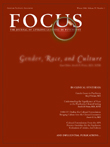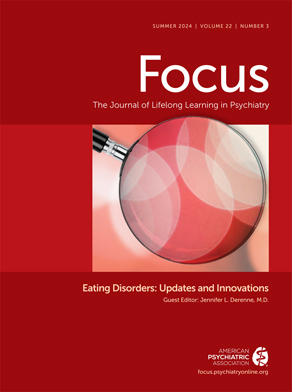Given space limitations and varying reprint permission policies, not all of the influentual publications the editors considered reprinting in this issue could be included. This section contains abstracts from additional articles the editors deemed well worth reviewing.
The Genetics of Sleep Disorders
Taheri S, Mignot E
Lancet Neurology 2002; 1:242–250
The contribution of genetic components to the pathology of sleep disorders is increasingly recognised as important. Genetic studies have identified genes that may be important in the regulation of circadian rhythms, which in turn determine the time of sleep onset and waking. Recent studies have shown that mutations in hPER2 are associated with autosomal-dominant familial advanced-sleep-phase syndrome. Genetic studies in a canine model of narcolepsy and in knock-out mice have led to the identification of the hypothalamic hypocretin (orexin) neurotransmitter system as a key target for human narcolepsy. The contribution of genetic factors to obstructive sleep apnoea syndrome (OSAS) has led to a better understanding of this complex disorder that may be part of a larger syndrome associated with respiratory, cardiovascular, and metabolic dysfunction. The aim of this review is to discuss the current knowledge on the role of genetic factors in sleep disorders, in particular circadian disorders, narcolepsy, restless-legs syndrome, and OSAS.
The Crucial Role of Psychodynamic Understanding in the Treatment of Eating Disorders
Zerbe KJ
Psychiatric Clinics of North America 2001; 24:305–313
Psychodynamic interventions for eating-disordered patients can provide a unique pathway to understanding the illness. Contemporary practice strives to integrate insights derived from drive theory, ego psychology, object relations, self-psychology, relational and attachment theories, and intersubjectivity to claim a more thorough understanding of the antecedents of the eating-disorder symptoms. Placing emphasis on the unique personal history of the individual and finding a safe haven in which to process that history are cornerstones of psychodynamic treatment embraced by each of these schools of thought. This article has emphasized the importance of creating a safe space for these patients to speak, processing the most salient affects that arise in the therapeutic dyad, assessing potential transference and counter-transference paradigms, and assisting these patients in mastering symptomatic behaviors by making healthier identifications with their therapists. Although the selected topics merely sketch how psychodynamic treatment may apply in some cases, it is hoped that they will whet the appetite for a more sustained inquiry for readers. Contemporary psychoanalysis aims to be more “user-friendly” for patients and treaters and eschews a “one interpretation fits all” approach to any person suffering from a particular diagnosis. Attachment theory, infant and developmental studies, and in-depth outcomes research are shaping the way that psychoanalytically informed treatments are carried out. Within the next decade, insights derived from these kinds of psychoanalytic research will be even more concretely and meaningfully used in the treatment of eating disorders and other Axis I conditions.
Topiramate in the Treatment of Binge Eating Disorder Associated With Obesity: A Randomized, Placebo-Controlled Trial
McElroy SL, Arnold LM, Shapira NA, Keck PE Jr, Rosenthal NR, Karim MR, Kamin M, Hudson JI
American Journal of Psychiatry 2003; 160:255–261
Objective: Binge eating disorder is associated with obesity. Topiramate is an antiepileptic agent associated with weight loss. The objective of this study was to evaluate topiramate in the treatment of binge eating disorder associated with obesity. Method: For this 14-week, double-blind, flexible-dose (25–600 mg/day) topiramate trial, 61 outpatients (53 women, eight men) with binge eating disorder who were obese (body mass index ≥30 kg/m2) were randomly assigned to receive topiramate (N=30) or placebo (N=31). The primary efficacy measure was binge frequency. The primary analysis of efficacy was a repeated-measures random regression with treatment-by-time as the effect measure. Results: Compared with placebo, topiramate was associated with a significantly greater rate of reduction in binge frequency, binge day frequency, body mass index, weight, and scores on the Clinical Global Impression severity scale and the Yale-Brown Obsessive Compulsive Scale (modified for binge eating). Topiramate was also associated with significantly greater reductions in binge frequency (topiramate: 94%, placebo: 46%) and binge day frequency (topiramate: 93%, placebo: 46%) and with a significantly higher level of response than placebo. The mean weight loss for topiramate-treated subjects who completed the study was 5.9 kg. Median topiramate dose was 212 mg/day (range=50–600). Nine patients (three receiving placebo, six given topiramate) discontinued because of adverse events. The most common reasons for discontinuing topiramate were headache (N=3) and paresthesias (N=2). Conclusions: Topiramate was efficacious and relatively well tolerated in the short-term treatment of binge eating disorder associated with obesity.
Gender Identity Development and Issues
Zucker KJ
Child and Adolescent Psychiatric Clinics of North America 2004; 13:551–568
This article focuses on the psychosexual development of children and adolescents who have sex-typed behavioral patterns that correspond to the diagnosis of Gender Identity Disorder, as defined in the fourth edition of the Diagnostic and Statistical Manual of Mental Disorders. The author provides an update on phenomenology and diagnosis, associated behavior problems, developmental course, biologic and psychosocial influences, and treatment and ethical issues.
Risks and Benefits of Estrogen Plus Progestin in Healthy Postmenopausal Women: Principal Results From the Women’s Health Initiative Randomized Controlled Trial
Rossouw JE, Anderson GL, Prentice RL, LaCroix AZ, Kooperberg C, Stefanick ML, Jackson RD, Beresford SA, Howard BV, Johnson KC, Kotchen JM, Ockene J; Writing Group for the Women’s Health Initiative Investigators
JAMA 2002; 288:321–333
Context: Despite decades of accumulated observational evidence, the balance of risks and benefits for hormone use in healthy postmenopausal women remains uncertain. Objective: To assess the major health benefits and risks of the most commonly used combined hormone preparation in the United States. Design: Estrogen plus progestin component of the Women’s Health Initiative, a randomized controlled primary prevention trial (planned duration, 8.5 years) in which 16608 postmenopausal women aged 50–79 years with an intact uterus at baseline were recruited by 40 US clinical centers in 1993–1998. Interventions: Participants received conjugated equine estrogens, 0.625 mg/d, plus medroxyprogesterone acetate, 2.5 mg/d, in 1 tablet (n = 8506) or placebo (n = 8102). Main outcomes measures: The primary outcome was coronary heart disease (CHD) (nonfatal myocardial infarction and CHD death), with invasive breast cancer as the primary adverse outcome. A global index summarizing the balance of risks and benefits included the 2 primary outcomes plus stroke, pulmonary embolism (PE), endometrial cancer, colorectal cancer, hip fracture, and death due to other causes. Results: On May 31, 2002, after a mean of 5.2 years of follow-up, the data and safety monitoring board recommended stopping the trial of estrogen plus progestin vs placebo because the test statistic for invasive breast cancer exceeded the stopping boundary for this adverse effect and the global index statistic supported risks exceeding benefits. This report includes data on the major clinical outcomes through April 30, 2002. Estimated hazard ratios (HRs) (nominal 95% confidence intervals [CIs]) were as follows: CHD, 1.29 (1.02–1.63) with 286 cases; breast cancer, 1.26 (1.00–1.59) with 290 cases; stroke, 1.41 (1.07–1.85) with 212 cases; PE, 2.13 (1.39–3.25) with 101 cases; colorectal cancer, 0.63 (0.43–0.92) with 112 cases; endometrial cancer, 0.83 (0.47–1.47) with 47 cases; hip fracture, 0.66 (0.45–0.98) with 106 cases; and death due to other causes, 0.92 (0.74–1.14) with 331 cases. Corresponding HRs (nominal 95% CIs) for composite outcomes were 1.22 (1.09–1.36) for total cardiovascular disease (arterial and venous disease), 1.03 (0.90–1.17) for total cancer, 0.76 (0.69–0.85) for combined fractures, 0.98 (0.82–1.18) for total mortality, and 1.15 (1.03–1.28) for the global index. Absolute excess risks per 10 000 person-years attributable to estrogen plus progestin were 7 more CHD events, 8 more strokes, 8 more PEs, and 8 more invasive breast cancers, while absolute risk reductions per 10 000 person-years were 6 fewer colorectal cancers and 5 fewer hip fractures. The absolute excess risk of events included in the global index was 19 per 10 000 person-years. Conclusions: Overall health risks exceeded benefits from use of combined estrogen plus progestin for an average 5.2-year follow-up among healthy postmenopausal US women. All-cause mortality was not affected during the trial. The risk-benefit profile found in this trial is not consistent with the requirements for a viable intervention for primary prevention of chronic diseases, and the results indicate that this regimen should not be initiated or continued for primary prevention of CHD.
Pedophilia
Fagan PJ, Wise TN, Schmidt CW Jr, Berlin FS
JAMA 2002; 288:2458–2465
This article addresses the risk factors associated with the psychiatric disorder pedophilia, its treatment, and treatment outcomes. It addresses physician responsibilities associated with case identification of victims and possible roles in the medical management of pedophilia. The essential feature of pedophilia is that an individual is sexually attracted exclusively or in part to prepubescent children. While pedophilia may be limited to fantasies and impulses, pedophilic behaviors are the primary concern of both the mental health and criminal justice systems. Remote risk factors for development of pedophilia often include the individual having been sexually abused as a child. Proximate risk factors for its behavioral expression are prevalence of comorbid psychiatric disorders and substance abuse disorders. Current treatment goals focus on stopping the behavior and achieving long-term behavioral control in the community. Common treatment methods are cognitive-behavioral, group therapy, and, when appropriate, medications such as androgen-lowering agents that can act as sexual appetite suppressants. Meta-analyses have established that treatment is more effective than nontreatment in preventing recidivism of sexual offenders in general, a finding that has a high probability of application to individuals with pedophilia. Pedophilia is a chronic psychiatric disorder, but it is treatable in terms of developing strategies for preventing behavioral expression. Ultimately, reducing the prevalence of pedophilic behavior requires further collaboration between the criminal justice system and the health care communities.

